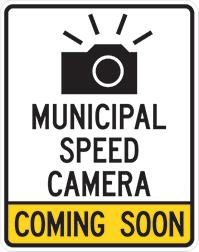Automated speed enforcement program

ASE is a system that uses a camera and a speed measurement device to capture images of vehicles going faster than the speed limit.
ASE focusses on changing driver behaviour to reduce speeding and improve safety. Obeying posted speed limits is the best way to avoid a ticket. Maximum speed limits are the law, not a guideline.
The ASE system is only used in school zones and community safety zones to protect our most vulnerable residents and help them feel comfortable while walking, running, playing, cycling, and generally enjoying their community.
ASE is about safety: it’s designed to work with other traffic safety programs and measures, including improvements to road networks, educational programs, and police enforcement.
If you have any questions about the Automated Speed Enforcement program, email the Automated Enforcement team.
To learn more about the Automated Speed Enforcement program, visit ASE in Ontario.
Notice with respect to the collection of personal information
Personal information is collected under the authority of the Highway Traffic Act s.205.1 for the purpose of using a camera and a speed measurement device to capture images of vehicles going faster than the speed limit in order to enforce speed limits and help make the roads safer for all road users.
If you have questions about this collection, email us or call 905-791-7800 or 1-888-919-7800 (toll-free).
Peel Region has one mobile ASE camera rotating on various Regional roads in the Town of Caledon. This camera is currently located on Highway 50, northbound, north of Gibson Lake Drive in Palgrave.
Later this year, the ASE camera will be rotated to its next location. Once the location is confirmed, “coming soon” signage will be installed to give drivers notice of the upcoming camera installation.
The Town of Caledon has its own active ASE program with 2 mobile cameras. These cameras will be rotated between school safety zones and community safety zones on Town roads where speeding is of concern.
The City of Mississauga and City of Brampton also have active ASE programs with cameras located in school safety zones and community safety zones where speeding has proven to be an issue.
Learn more about Traffic calming and red light cameras.
Choosing new ASE camera locations
In keeping with Ontario Regulation, ASE cameras can only be installed in designated school safety zones or community safety zones (or both) where the posted speed limit is less than 80 km per hour.
Peel Region is currently developing criteria based on data-driven evidence for selecting and designating school and community safety zones, along with any necessary speed reductions or reviews.
How will drivers know that a location is equipped with ASE?
Clear signage is always posted within each school zone and community safety zone where an active system is in place. “Coming Soon” signs are placed at the location 90 days before camera installation so that drivers are aware. ASE is about safety and openness.
Minor adjustments to community safety zones, including speed limit reductions, may be completed to ensure vehicles can safely reduce their speed as they approach the ASE camera zones. This includes replacing flashing 40 km per hour speed limit signs at select locations with permanent 40 km per hour speed signs.
If a vehicle exceeds the posted speed limit in an automated speed enforcement area, the ASE system captures an image that is stored and reviewed by a Provincial Offences Officer.
Provincial Offences Officers review the images captured by the ASE system. If an offence has occurred, they issue a ticket to the vehicle’s owner, regardless of who was driving the vehicle at the time of the offence.
The ticket contains a digitized copy of the image and an enlargement of the license plate. It is mailed to the registered plate holder within 30 days of the offence, outlining next steps and the cost of the fine. Automated speed enforcement tickets do not result in demerit points, and the registered owner’s driving record will not be affected.
What to do if you get a ticket
The owner of the motor vehicle is liable for the speeding ticket.
Provincial Offences Counts provide 3 options to vehicle owners disputing a ticket:
- Pay the provincial offence notice (the ticket).
- Ask for a resolution (settlement) meeting with a prosecutor.
- Have a trial before a Justice of the Peace.
To view the Certificate of Accuracy that ensures each ASE camera in Peel is accurately reading speeds, visit the City of Toronto’s Certificate of Accuracy list. Search by municipality to find certificates for ASE cameras in Peel.